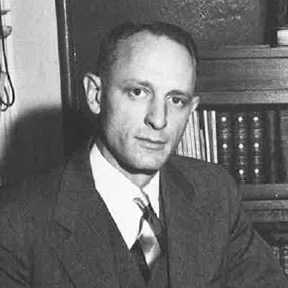
Managing Partner/President
1946 – 1981
In 2015, its 150th year, Peirce College is proud to offer students bachelor’s and master’s degree programs in addition to associate degrees. That wasn’t always the case, however.
Under the dual leadership of Mary B. Peirce and Thomas May Peirce III, the school became Peirce Junior College in 1946 and began offering associates degrees to its students. It was the same year that Thomas May became the school’s Managing Partner and Chief Executive Officer. He was no stranger to Peirce: after graduating from Dartmouth College in 1926, Thomas May went on to achieve a degree from what was then known as Peirce School. In the late ‘30s, he also served as president of the alumni association.
After entering the workforce with Central Penn National Bank, Thomas May also went on to serve in the United States Naval Reserve during World War II and ascended to the rank of Lieutenant Commander. His duty to his country complete, Thomas May Peirce III took it upon himself to help Mary get the school back on track with the war and the Great Depression now behind in the rearview mirror.
WWII had seen throngs of traditional college-aged students depart to serve their country, so enrollment numbers were down across all of higher education. Things improved once the soldiers returned after the war and took advantage of the GI Bill, but Thomas May wanted to ensure the school was set up to succeed for decades to come.
His first act was to hire William J. Hamilton, who boasted an impressive background in commercial education, as the school’s dean. Then, to address the changes that the technology and business worlds saw in the 1950s, he set about creating a new curriculum. That which Mary had established in the ‘20s and ‘30s had served the school well in the past, but now it was time to look towards the future.
Thomas May established specialized certificate programs in its secretarial programs; adopted a formal college credits program; improved the school’s academic standing by joining the Business Education Associates as a member institute; and managed to get Peirce full accreditation as one of the country’s first Junior Colleges of Business.
It was often said that, in accordance with his naval background, Thomas May “ran a tight ship.” It was not uncommon for him to work several days straight, roaming the school’s halls after midnight and leaving voluminous notes for staff members to go over the next morning.
Obsessed with pushing the school towards ever greater success and innovation, Thomas May introduced what was reputed to be the “first Business Data Processing educational program in the Eastern United States” in 1959.
Before handing leadership duties off to Dr. Raymond C. Lewin in 1981, Thomas May also successfully converted the college into a non-profit institution and achieved Middle States Association of Colleges and Secondary Schools (3624 Market Street, Philadelphia, Pennsylvania, 19104, 267-284-5000) accreditation for it in 1971.
Upon his retirement in 1981, Thomas May told students that he was “leaving your College in good hands” by placing Dr. Lewin, the school’s first non-Peirce family leader, in charge of it.
1608 Walnut Street, Suite 1900, Philadelphia, PA 19102 | 215.545.6400 | Privacy Statement | Site Map | Consumer Information